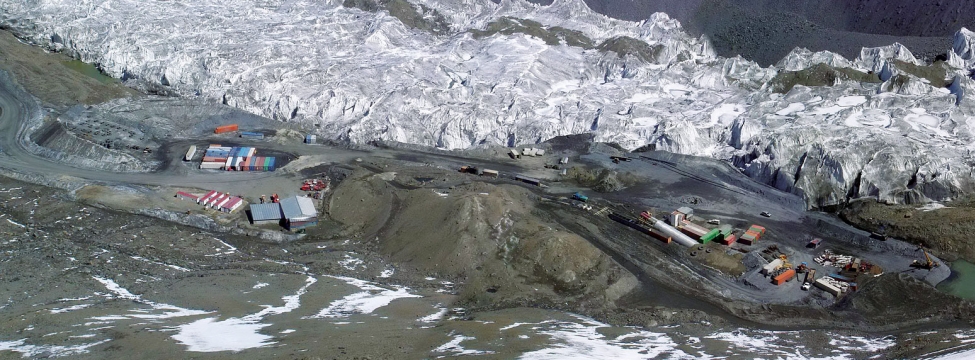To serve you better, our new website displays information specific to your location.
Please visit the site and bookmark it for future use.
Mining challenges in permafrost environments
The Kumtor gold project is located in the mountainous terrain of the Tien Shan Mountains in the Kyrgyz Republic, at an altitude of around 4000m. The mean annual temperature is minus 8°C.
Locating and designing an exploration decline to access and explore the mineralised horizon below the operating open pit proved to be a challenging experience as a result of poor ground conditions, widespread glaciation and location of the waste dumps. Once the location of decline was chosen, the team faced several engineering design challenges including weather, permafrost and a drop-cut within a glacial moraine with ice lenses.
The mine geology consists of four major thrust slices. The slice hosting the mineralisation is composed of phyllites that are strongly folded and schistose. The footwall contact of this structural segment is the well-developed and weak Kumtor Fault Zone. The adjacent rocks in its hangingwall are strongly affected by shearing and faulting for several hundred meters.
For many reasons, starting the decline near the glacier, within the constricted ore zone was considered the most favorable option, in particular, since it would reach the more competent ground of the hangingwall units more quickly.
An Armtec Multi-Plate® tunnel support was to be installed within the drop-cut and covered with engineered fill to protect the decline access from slope instability, snow falls and possible avalanches. Ice lenses within the moraine could affect the stability of the slopes and the Armtec tunnel foundation, where heated air would be drawn underground. To keep the Armtec foundation frozen, thermosyphons were installed to cool the ground when the ambient air is colder than the subsurface.
The SRK team developed site-specific rock classes based on the GSI and NGI Tunnelling Quality Index (Q) classification systems. The rock mass conditions range from Fair to a Very Poor rating in graphitic phyllite near fault structures. A site specific system was selected to better characterise and differentiate the weaker rock masses. Following a full geotechnical evaluation, four support classes were developed ranging from conventional bolt, screen and shotcrete, to spilling and steel arch (full invert) support. Using the Rocscience software Phase2 a squeezing ground assessment was undertaken, with steel set and shotcrete support simulated as a composite liner.
Since the support materials and installation processes needed to function within the initial cold permafrost ground temperatures, choices included an oil-based rebar resin, and a customised shotcrete mixture that used heated aggregate and high water temperatures.
With a moving glacier and waste dump material on the surface, it was extremely difficult to produce a full geotechnical evaluation along the proposed path of the decline. To manage the geotechnical risk, the team developed a comprehensive process of cover and probe drilling and monitoring of excavation and support performance.
SRK, as part of a multi-disciplinary team helped develop this complex design.
Bruce Murphy: bmurphy@srk.com
|
You can download a PDF of the entire |
PDF
A4 |
PDF
Letter |
|
|
|
Our newsletters focus on specific areas of interest to earth resource professionals and clients. Each is available as an Adobe Acrobat PDF file. If you don't already have Adobe's PDF reader, you can download it free.
![]()


